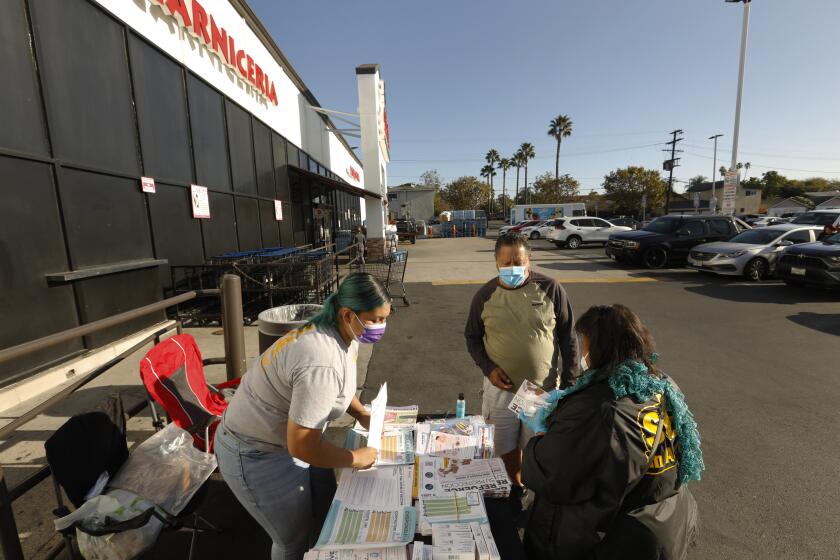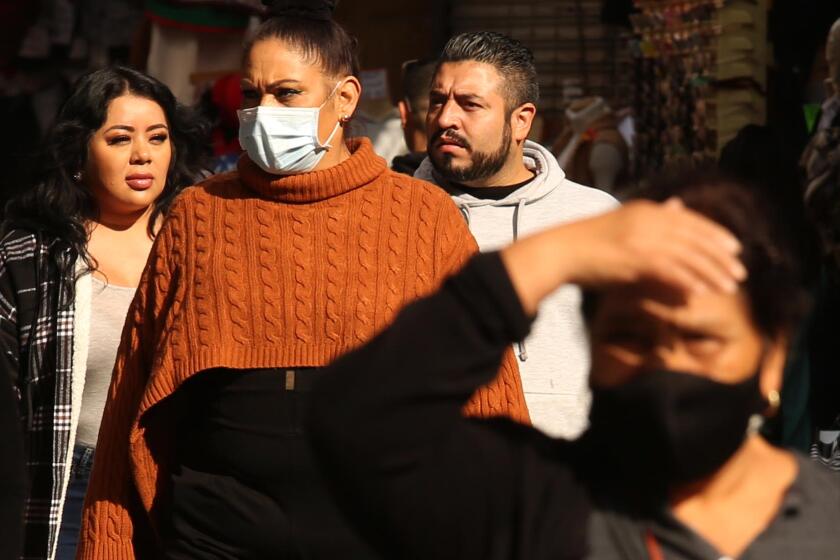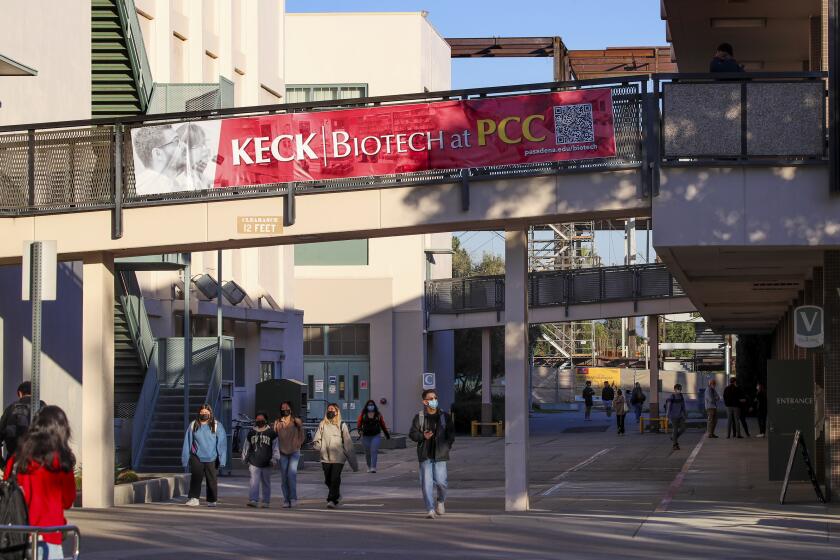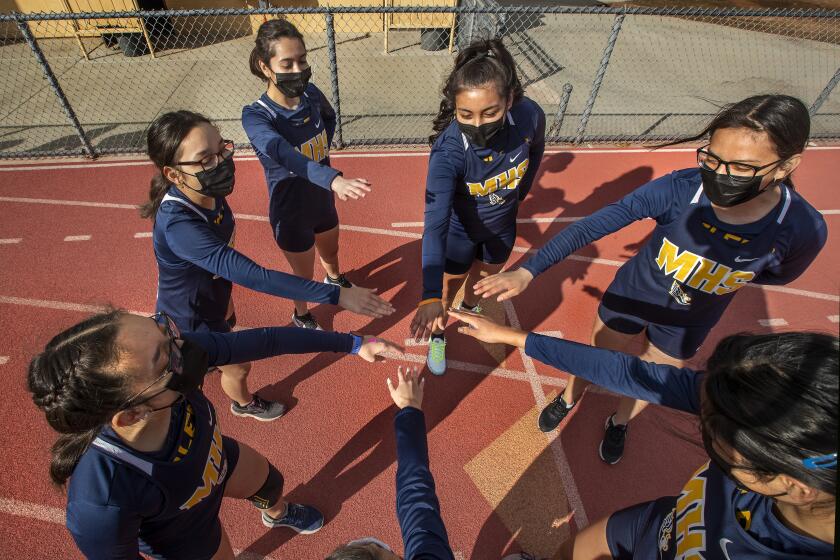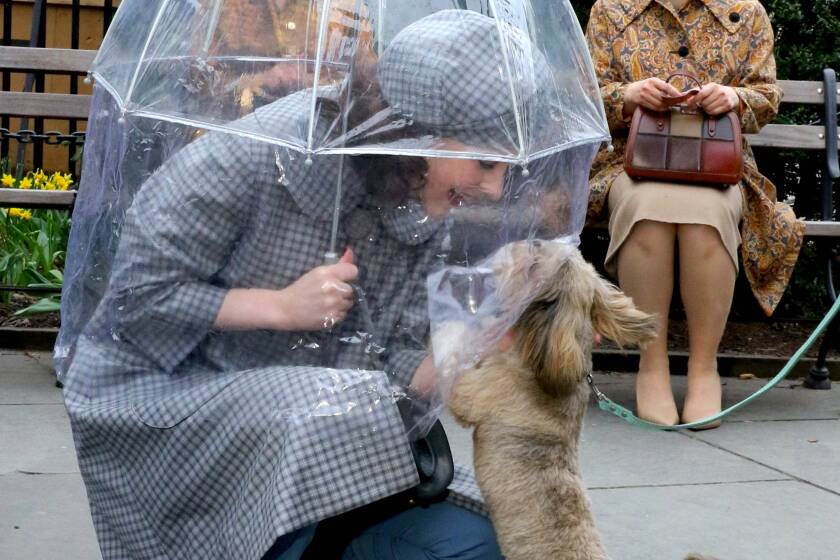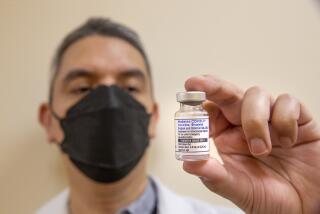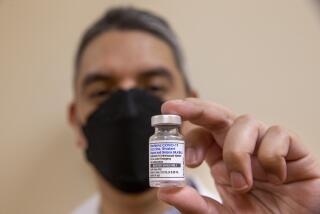Another COVID-19 booster shot may be coming. But interest is waning
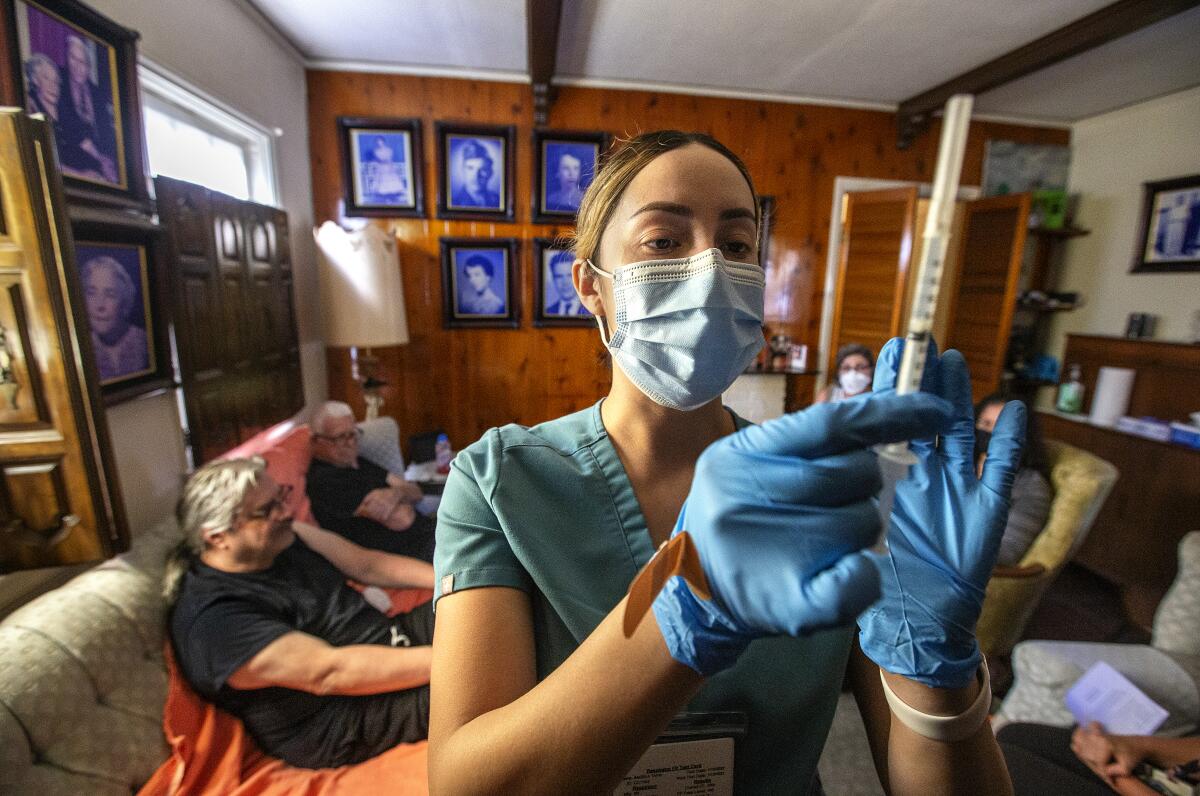
- Share via
As government officials close the book on the emergency phase of the COVID-19 pandemic, health authorities are turning their attention to the next chapter of the vaccination campaign.
Though nothing is etched in stone, federal officials are considering the authorization of another booster shot this spring.
The timing of that decision — and who would be eligible — remains unclear. But for older residents or those with underlying health conditions that make them more likely to develop a severe COVID-19 illness, another booster could provide peace of mind and an additional jolt of protection.
“Lots of people at higher risk are asking whether or not they need another dose. And we’re waiting for guidance on that,” Los Angeles County Public Health Director Barbara Ferrer said.
The county public health chief says emergency orders are no longer needed ‘to ensure we have and can use life-saving tools and mitigation strategies.’
Authorities in Britain have already green-lighted a spring booster shot — but only for nursing home residents, seniors 75 or older or those who are immunosuppressed and at least 5 years old.
“This year’s spring program will bridge the gap to the planned booster program in the autumn, enabling those who are most vulnerable to be well-protected throughout the summer,” Dr. Wei Shen Lim, chair of Britain’s Joint Committee on Vaccination and Immunization, said in a statement.
Canada’s National Advisory Committee on Immunization is suggesting a similar approach: making a spring booster available for those 65 or older as well as immunosuppressed adults and nursing home residents.
It remains to be seen how much of an appetite there could be for an additional booster in the U.S. In California, 45% of vaccinated seniors have received the updated booster shot. Among all age groups, only 25% of eligible Californians — that is, people who have completed their primary vaccination series — have rolled up their sleeves since the updated bivalent doses became available in September.
The end of COVID-19 emergency declarations in L.A. County brings new guidance on when to mask, quarantine or isolate and the reporting of new cases.
Even though uptake of the updated booster shot in Canada has also been relatively low, officials there said it would be beneficial to offer additional doses.
“We have historically seen patterns of waning protection against severe disease by six months after the last dose, particularly in older adults without prior infection,” Dr. Shelley Deeks, chair of Canada’s National Advisory Committee on Immunization, said in a statement.
Emerging data demonstrate that those who get the bivalent booster shot are better protected against hospitalization and death, with the benefit particularly pronounced among older individuals.
Among people age 65 to 79 in L.A. County, for instance, those who got the updated booster had one-tenth the risk of being hospitalized compared with those who are unvaccinated, and roughly half the risk of being hospitalized compared with those who are vaccinated but haven’t received the bivalent booster.
Even among younger adults, in their 30s and 40s, the benefits were noticeable. Those who got the updated booster had one-sixth the chance of being hospitalized than unvaccinated people, and roughly half the chance of being hospitalized compared with vaccinated people who hadn’t gotten the updated booster.
The same goes with deaths. Those age 65 to 79 who got the updated booster were about one-tenth as likely to die from COVID-19 compared with unvaccinated people. They were roughly half as likely to die compared with vaccinated people who hadn’t received the updated booster.
Even with the termination of many COVID-19 emergency declarations, including in California, officials are stressing vigilance. And vaccinating those most at risk remains a key focus moving forward — particularly as the disease continues to kill thousands of people a week worldwide.
“These [deaths] are largely among individuals who are of older age, they may not have been vaccinated or received the full number of doses that are required for them at their age,” said Maria Van Kerkhove, the World Health Organization’s technical lead on COVID-19. “So the threat remains.”
If authorized by U.S. health officials, additional doses of bivalent vaccine — designed to protect against Omicron subvariants that once dominated the coronavirus landscape — will, like in Britain and Canada, probably be made available for older people or others at higher risk of severe COVID-19 complications.
California is offering cash to students and community groups to spread the word about a $2,500 grant for students who lost jobs because of COVID-19.
Dr. Peter Hotez, a pediatrics, molecular virology and microbiology professor at Baylor College of Medicine, has been a prominent supporter of making a second updated booster shot available, given what’s known about COVID vaccines’ waning protection over time.
“Uptake of the second [updated booster] may only be around 10%,” Hotez tweeted. “But for those who want it — especially the immunocompromised — they should have that option.”
Health officials have for months touted the benefits of the bivalent boosters, saying they provide added protection against infection, and especially against severe illness.
Still, there appears to be booster fatigue, even in highly vaccinated areas. A Times data analysis showed only two of California’s 58 counties had seen even 40% of their eligible residents get an updated booster as of March 31.
By comparison, about 73% of Californians completed their primary vaccination series, and 61% of vaccinated residents have gotten at least one booster shot, according to data from the state Department of Public Health.
Some residents, especially those boosted recently, may have been unclear that the latest shot was formulated differently, or felt they didn’t need it.
Hotez said he’s struck by how many people don’t know an updated booster came out in September.
“We still have a lot of vaccine education that needs to be done,” he wrote.
A new study examines the factors that caused some states to have COVID-19 mortality rates that were four times higher than others.
Others could simply be sick of rolling up their sleeves after already receiving multiple shots over the last two years.
COVID-19 conditions may also have played a role. Though California did see a coronavirus surge in the late autumn, it was short-lived and came nowhere near the devastation seen earlier in the pandemic.
The reduced severity of COVID-19 this last winter is likely due to a combination of factors, including the fact that older vaccine shots and earlier infections still provide a considerable degree of immunity; a plentiful supply of anti-COVID therapeutic drugs such as Paxlovid; and the relative stability of the dominant coronavirus strain — which has remained some subvariant of Omicron for more than a year.
As has been the case throughout the vaccine rollout, booster administration differs across California. The Times’ data analysis shows uptake has been higher in the San Francisco Bay Area and lower in the Inland Empire and San Joaquin Valley. Coastal Southern California counties are roughly in line with the statewide rate.
Even in the Bay Area, which has consistently boasted robust levels of vaccine uptake, only about 35% of eligible residents have gotten the latest shot.
About 33% of eligible residents in Santa Clara County received the updated booster, as did 36% of those in Alameda County and just under 40% in San Mateo County.
The state’s booster leaders were Marin and San Francisco counties, both at about 42%.
Southern California’s coastal counties — including Los Angeles, San Diego, Orange and Ventura — all have about the same rate of uptake: 24%. Santa Barbara County’s is slightly higher, at 25%.
The Greater Sacramento area had a booster uptake rate of 27%, roughly in line with the overall statewide figure.
The San Joaquin Valley, however, lags well behind. The updated booster rate there was around 16%, the worst of the five regions defined by the state Department of Public Health.
The same was true in the Inland Empire. Riverside and San Bernardino counties have seen far lower updated booster coverage than their coastal neighbors, at 19% and 17%, respectively.
Although booster rates are not what officials had hoped for, authorities say it’s significant that large majorities of a number of highly populated areas did complete the primary vaccination series.
There was a time when getting so many people vaccinated seemed a daunting prospect. L.A. County, for instance, initially set a target of administering at least one shot to 80% of all residents age 16 or older.
That goal long seemed elusive, but the latest county data show that 85% of all county residents 5 or older have received at least one shot, and 77% have completed their primary vaccination series.
And within this group, 46% have received at least one additional dose, whether it be the older or the updated bivalent booster.
The change brings to an end almost three years of strict COVID-19 safety rules meant to help limit the spread of the virus on sets.
For the public, there’s an expectation that COVID-19 vaccines may mirror flu shots in the U.S.: one dose, formulated and administered annually.
That approach could bear some fruit. A recent survey from the Kaiser Family Foundation found 53% of adults said they were somewhat or very likely get a COVID vaccine if it were offered annually.
That would be similar to the typical uptake of the flu vaccine. About 48% of U.S. adults have received the flu shot this season, according to the U.S. Centers for Disease Control and Prevention.
“We can, as we all know, get both vaccines on the same day, one in each arm,” Ferrer said. “And then we’ll have some protections going into what is usually the season with the highest number of respiratory viruses.”
More to Read
Sign up for Essential California
The most important California stories and recommendations in your inbox every morning.
You may occasionally receive promotional content from the Los Angeles Times.
